Iguazu Falls is a place where pictures really do speak louder than words . . . and even then, it’s hard for photos or even video to really do this amazing place any kind of justice.
275 waterfalls ranging between 200 and 300 feet high sit at the crossroads of Brazil, Argentina, and Paraguay – higher than Niagara, wider than Victoria . . . nothing prepares you for their power and fury. We were immediately on side with the locals pushing for the Falls to be voted as one of the New 7 Wonders of Nature in an upcoming poll!
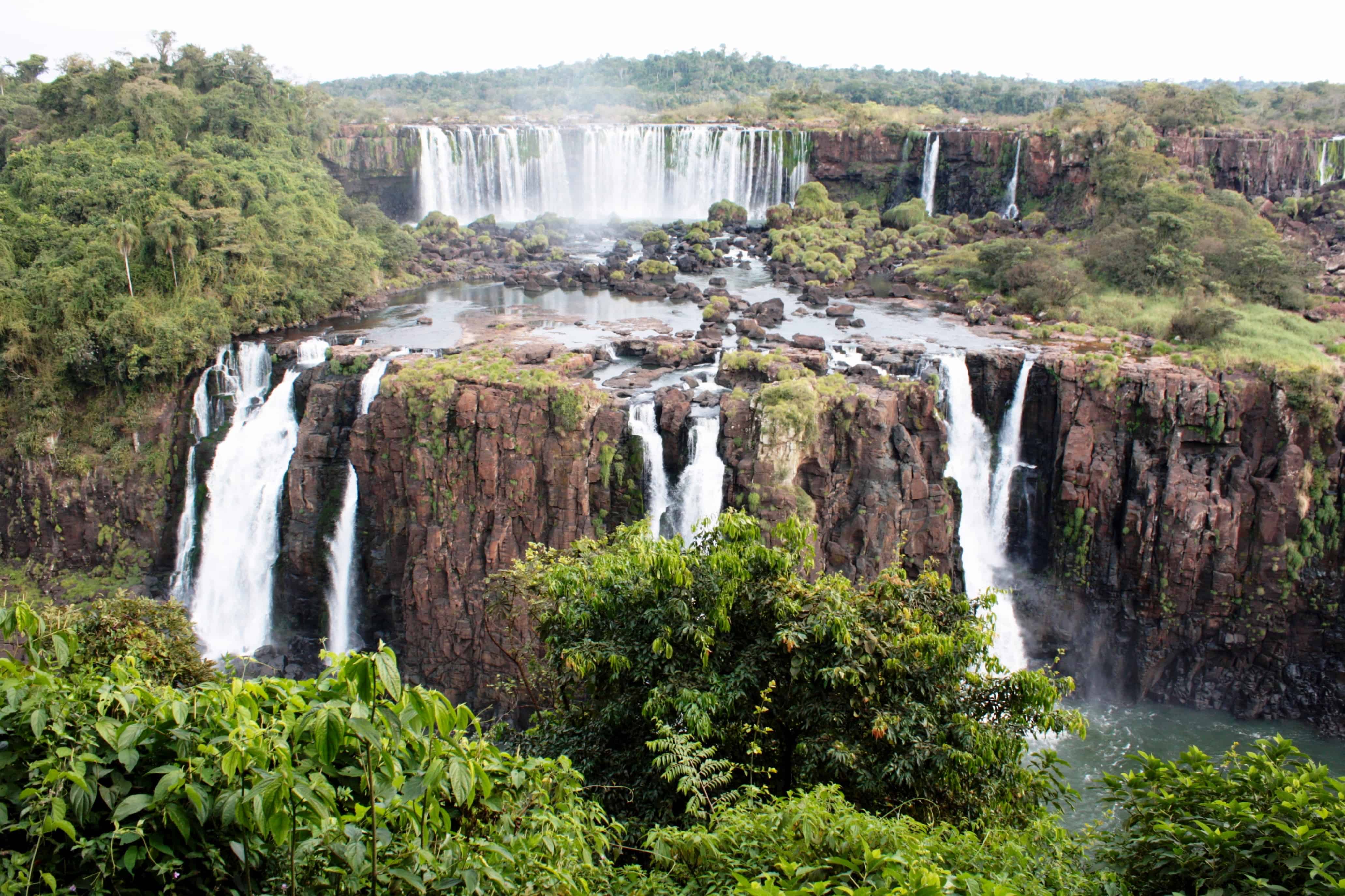
Our 23 hour bus journey from Salta to the Falls had us pondering the fraught history of the region as we passed by the jungle ruins of 17th century Jesuit missions, all that remain of a story with a tragic ending . . . we arrived with visions of ‘The Mission’, where a Jesuit priest tied to a cross is sent over the falls to his death. Thankfully these days the region is more accommodating to visitors.
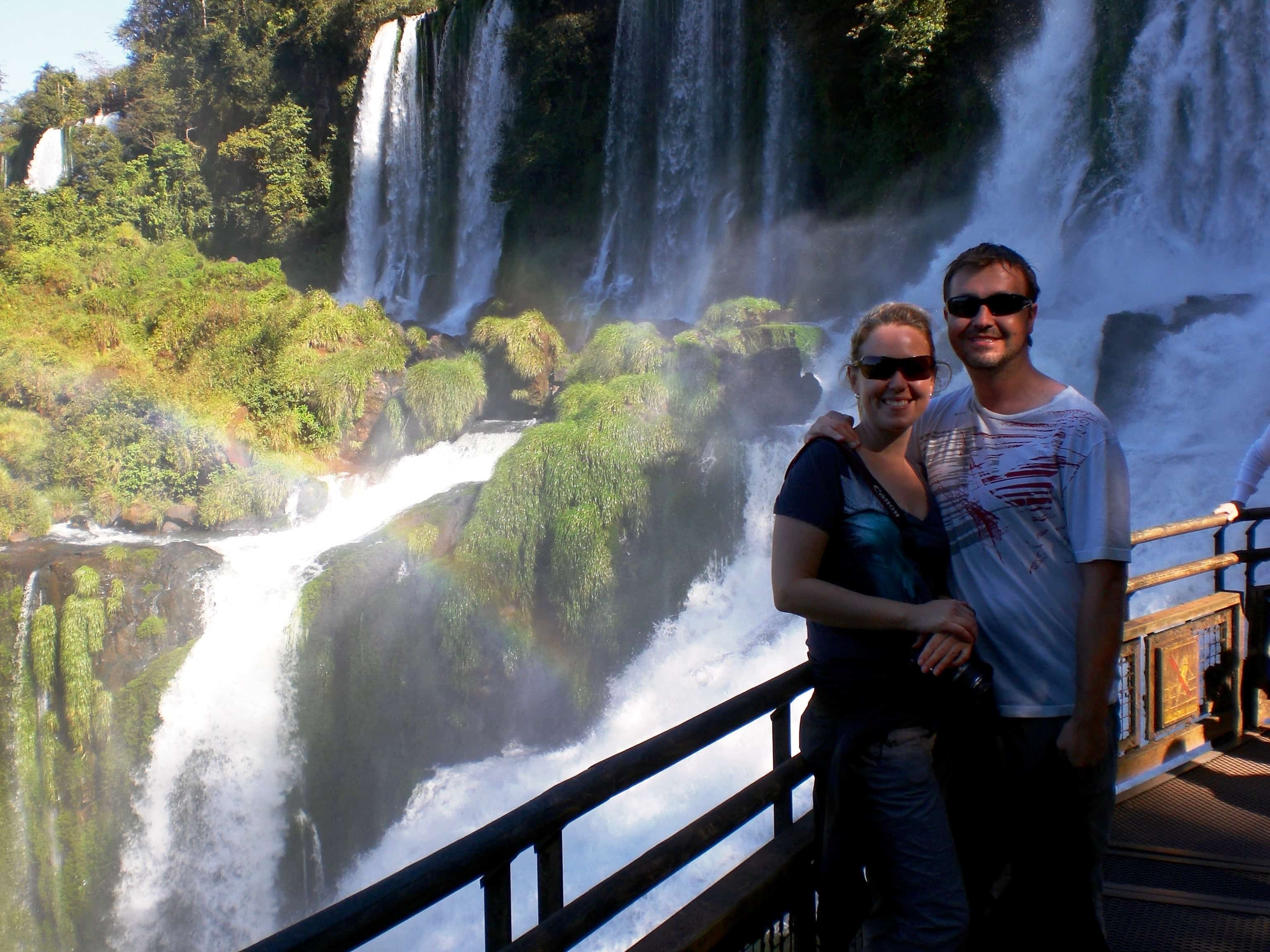
Many we spoke to debated which side of the Falls is better – Argentina or Brazil – but after visiting each, we wouldn’t hesitate to say both. It must be one of the world’s most spectacular national borders!
On the Argentinian side, a host of nature trails offer up-close-and-personal perspectives and stunning vistas at every turn, peaking at the roaring rim of the incredible Garganta del Diablo (Devil’s Throat) – a huge mist-shrouded, crescent-shaped chasm 82 metres high with a wow factor that really does see you lost for words. Not that anyone would hear you anyway.
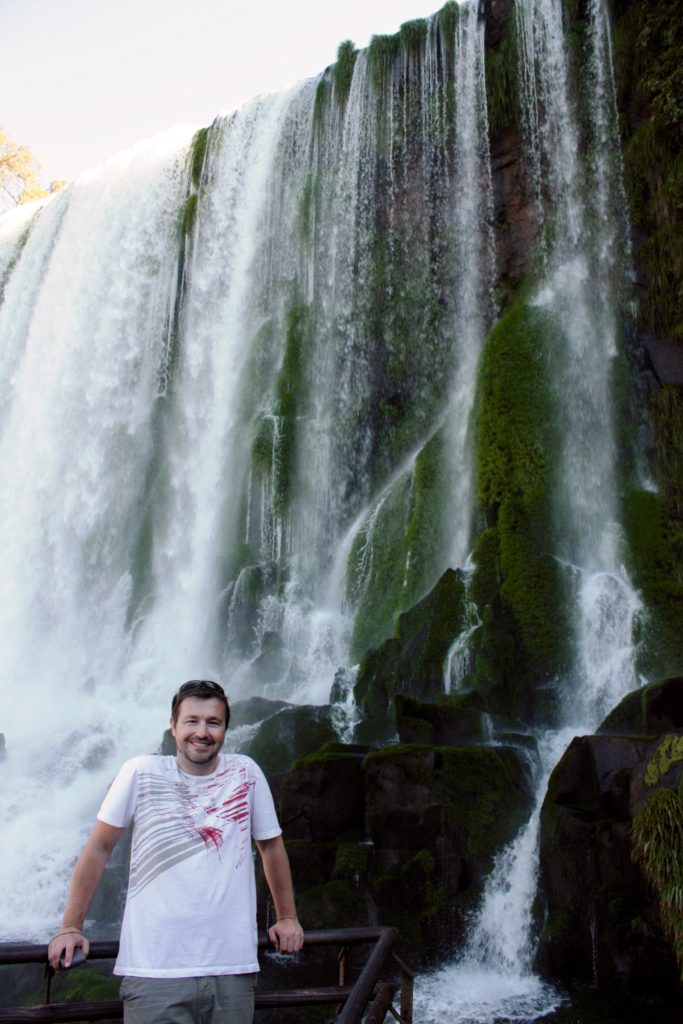
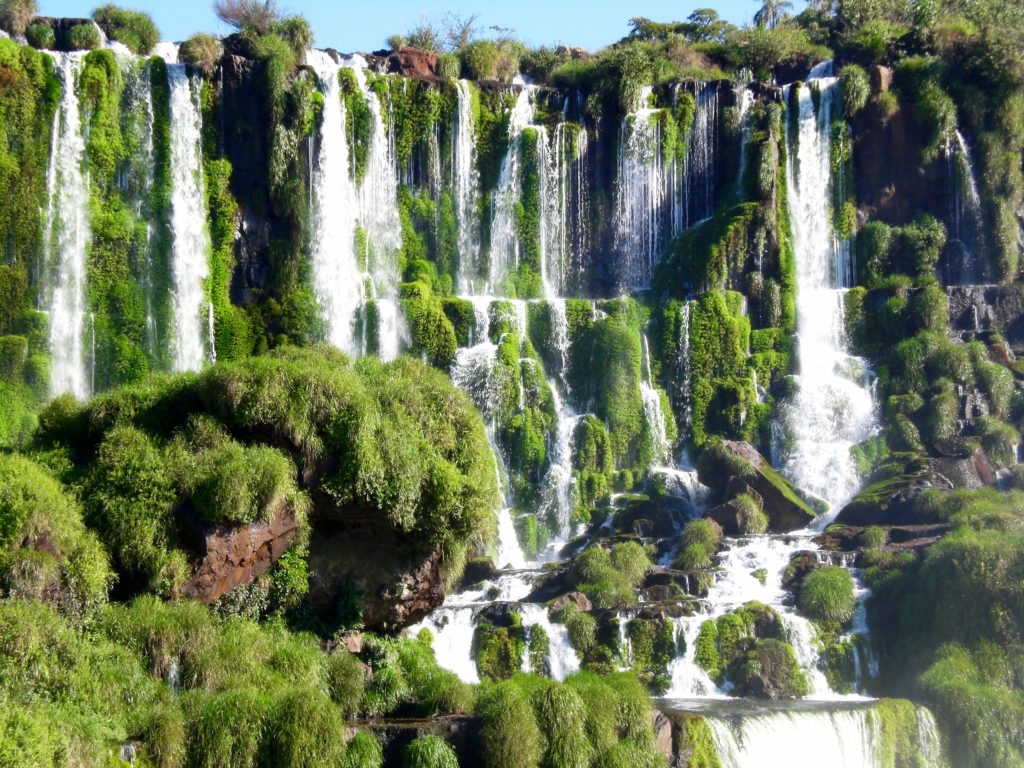
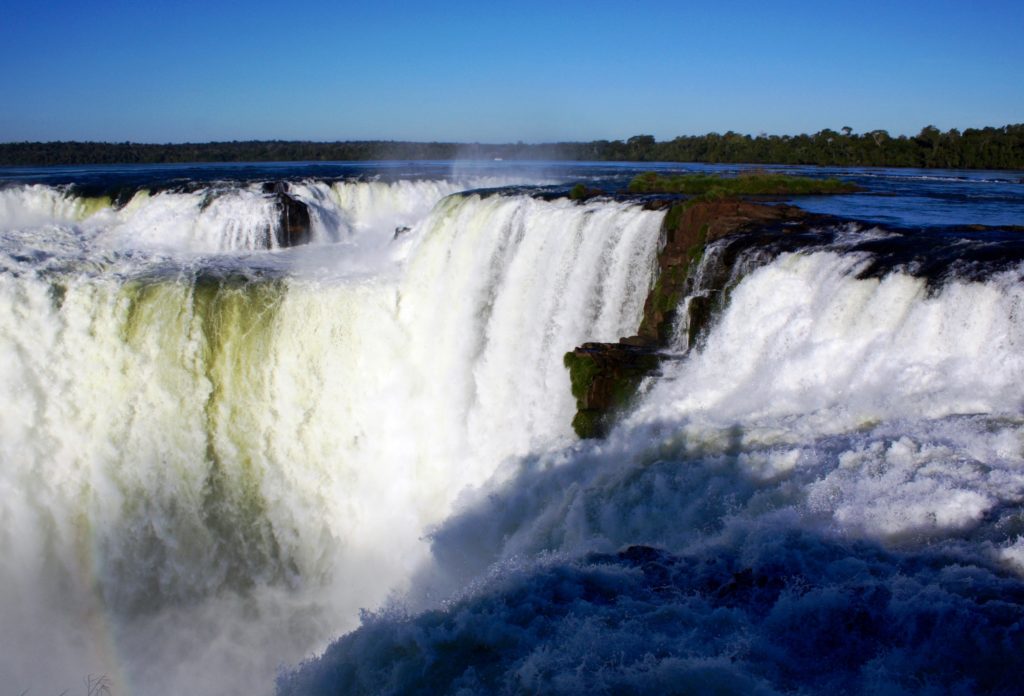
Argentina’s competitive offering…
And just when you’ve run out of superlatives to describe the experience, the Brazilian side of the Falls offers you something completely different – a panoramic vision of these extraordinary cataracts, each one more impressive than the last, and a staggering finale right in the Devil’s mouth!
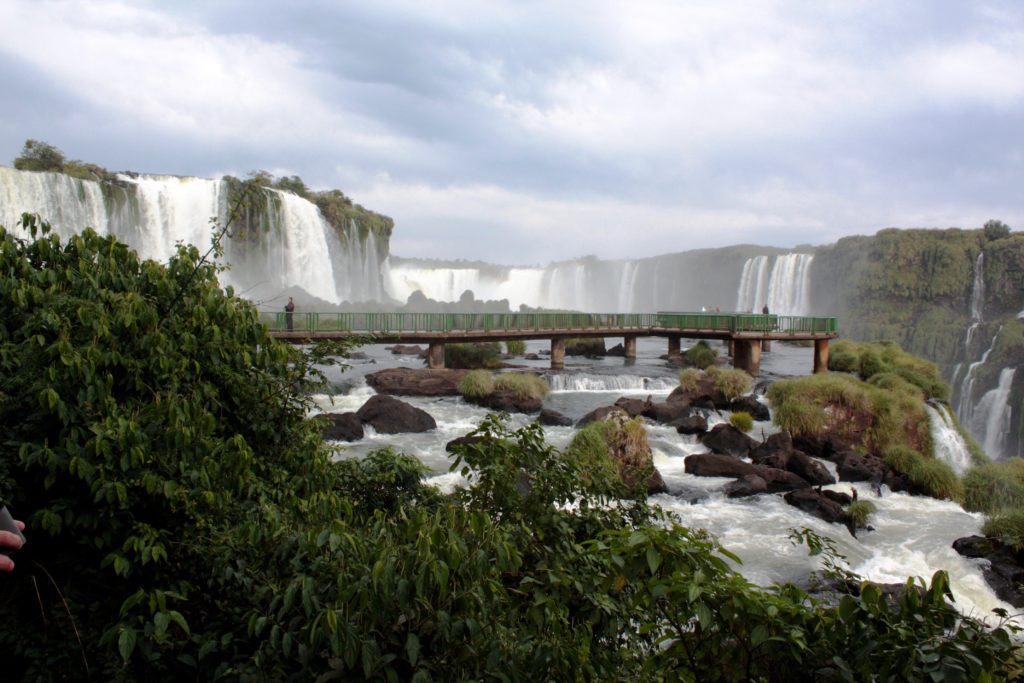
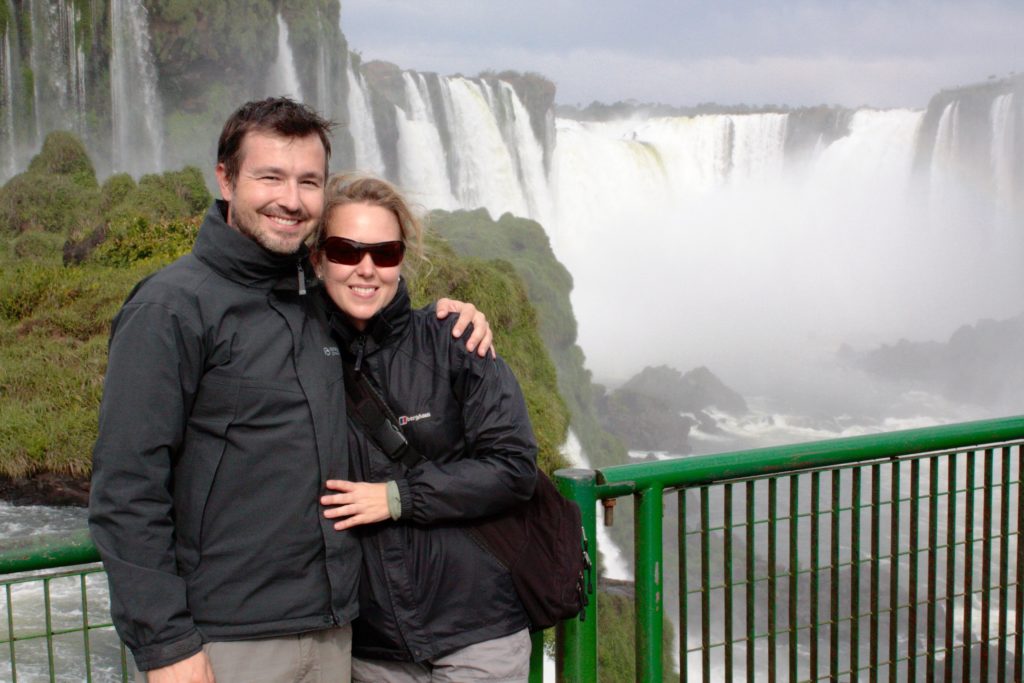
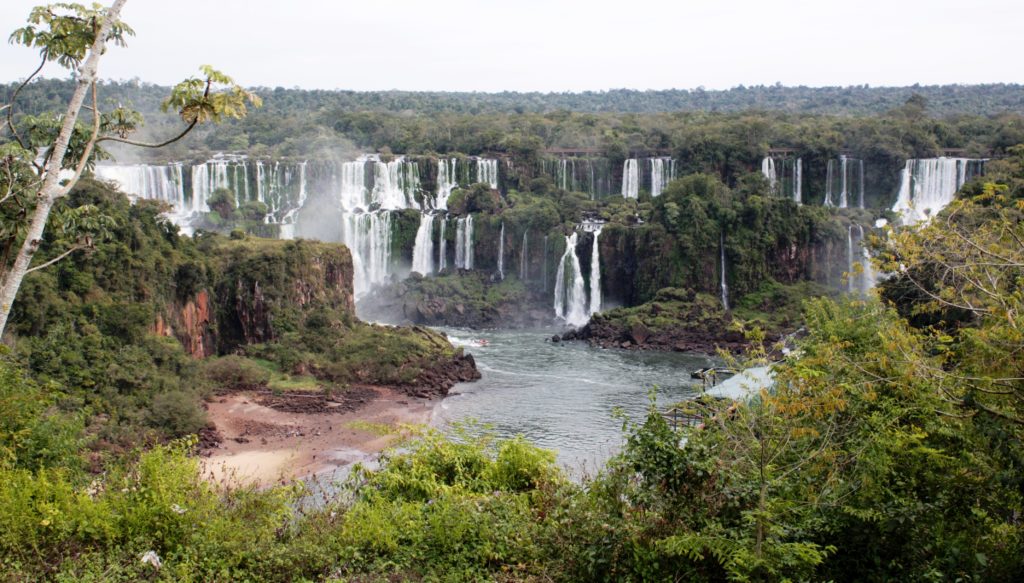
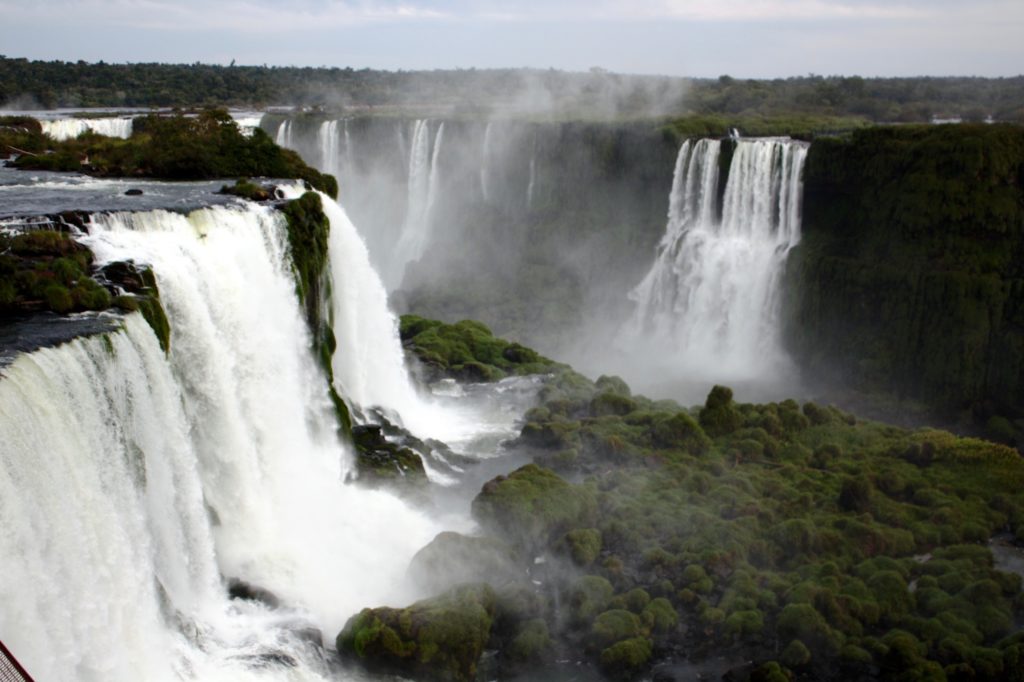
Brazil’s epic counter-offer…
Mind-blowing!
See our blog post Best of Iguazu: Photo Gallery to get a real sense of how amazing this place is.
Good to know
When to go: Depends what you’re after. Blue skies? Big water? January and February are peak months but the water is high, along with the heat and humidity. May and July means rain but the crowds are fewer, prices lower, and the waterfalls are awesome. For the best weather and prices, head in September and October. We went in June and we had a bit of everything – this is nature after all!
Getting there: The quickest route to Iguazu is by air and there are airports near the Falls on both sides, in Argentina and Brazil. We took a 23-hour (you read that right) bus ride from Salta, which was long but not uncomfortable and we got to see some amazing landscapes along the way.
Stay: We stayed on both sides of the Falls: in Argentina, at a hotel halfway between the Falls and Puerto Iguazu; the town isn’t much to write home about but if you’re staying a couple of days, you’ll feel less like a captive audience if you stay in town. On the Brazil side, we stayed in Foz do Iguaçu (also a bit rough around the edges) in a decent hotel with easy bus access to the Falls.
Do: Obviously the Falls are the star attraction here but it’s also worth spending a couple of hours at the Parque das Aves on the Brazilian side, a terrific five hectare bird park with a huge diversity of colourful avian residents.
